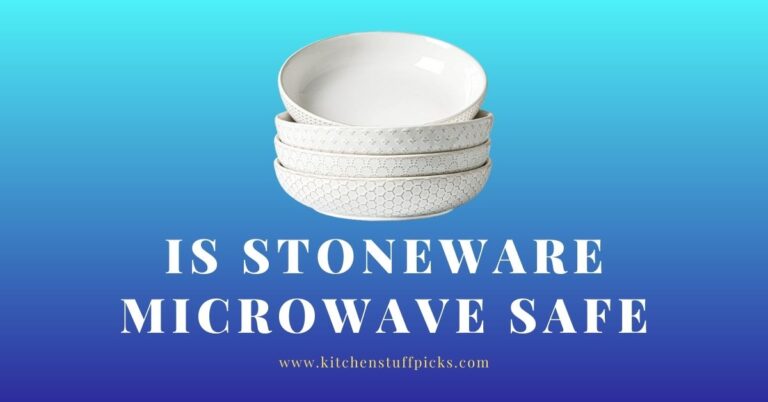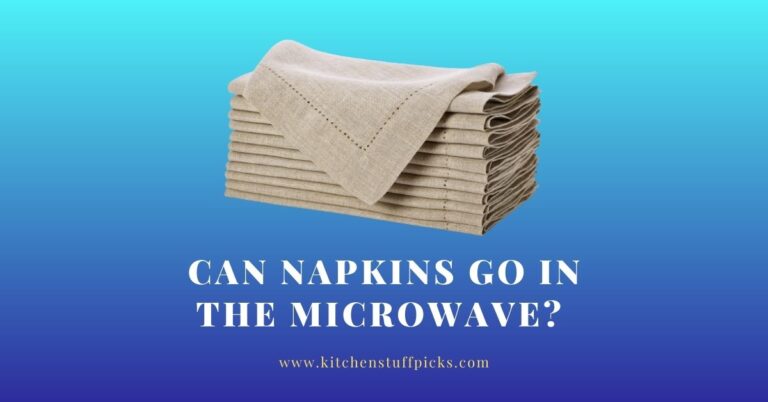can you microwave aluminium tray – Your Ultimate Guide
When it comes to reheating leftovers or defrosting that frozen dinner you forgot about, we often turn to our trusty microwave. But wait, can you microwave aluminium trays? That’s the burning question we’re about to unravel in this blog. Aluminium trays are a common choice for packaging and serving food, but the compatibility with microwaves isn’t always crystal clear.
Understanding which materials are safe for microwave use is more than just a kitchen curiosity. It’s a matter of ensuring your safety and avoiding potential mishaps. Just think about it – we’re dealing with electromagnetic waves here. Knowing which materials can withstand these waves without causing fires, sparks, or any other undesirable microwave fireworks is crucial.
So, why are we here? The purpose of this blog is to dive deep into the safety aspects of microwaving aluminum trays. We’ll explore the scientific nitty-gritty behind microwave heating, unravel the intricate relationship between aluminum and microwaves, and debunk any misconceptions that might be lingering around this topic. By the end of this journey, you’ll be armed with the knowledge to confidently decide whether to give that aluminum-tray-clad leftover lasagna a spin in the microwave or not.

The Science Behind Microwaving
Microwaves – the kitchen’s unsung heroes that make reheating that cup of coffee as simple as a button press. These appliances work by emitting microwave radiation, which excites water molecules in the food, generating heat in the process. It’s like a tiny party where water molecules dance their way into warmth.
However, microwaves don’t just interact with water; they can play a game of tag with different materials, too. Some materials absorb microwave energy while others reflect it like a mirror reflects light. This interaction leads us to the burning question: what happens when microwaves meet aluminum? Will it be a harmonious waltz or a chaotic clash?
To make sense of these microwave-material relationships, let’s talk about conductivity and insulation. Some materials conduct electricity (or microwave energy, in this case) well, while others are insulators. Think of it as a game of “pass the energy.” Understanding this concept is key to comprehending how different materials respond to microwaves, especially our intriguing guest of honor – the aluminum tray.
Aluminum and Microwaves: A Complex Relationship
Ah, aluminum – lightweight, malleable, and often used for packaging our favorite snacks. As a metal, aluminum boasts impressive heat conductivity, making it a go-to choice for cookware. But here’s the twist: aluminum is a metal, and metals aren’t always best buddies with microwaves.
The concern about microwaving aluminum stems from the potential for sparks or fires. When microwaves hit metal, they can create electric currents that lead to sparking, and nobody wants a mini lightning show in their kitchen. Moreover, the thinness of aluminum trays can cause them to deform or melt due to the intense heat generated by these currents.
Let’s bust a myth while we’re at it – no, microwaving aluminum won’t cause your microwave to explode in a fiery spectacle. However, it’s still essential to approach this with caution. Some aluminum containers are designed for microwave use, with special coatings or modifications to prevent sparking. But in general, if you’re uncertain about an aluminum container, it’s safer to transfer the food to a microwave-safe dish.
Stay tuned as we embark on a microwave-themed journey where science meets the kitchen. What do you think – will aluminum trays pass the microwave safety test, or will they remain on the “caution” list? Let’s microwave our way through the facts and find out!
Factors Affecting Aluminum’s Behavior in Microwaves
The thickness and geometry of aluminum trays play a significant role in how they behave in the microwave. Thicker trays might appear sturdier, but they can also trap heat, leading to uneven heating and potentially hazardous hot spots. Thinner trays, on the other hand, are more prone to warping due to the intense currents induced by microwaves. So, it’s not just about the size of your aluminum sidekick, but also its shape and thickness that determine its microwave compatibility.
Watch out for those sharp edges and irregularities on your aluminum tray. Microwaves are all about that energy dance, and these irregularities can become focal points for electrical currents, sparking a dazzling but dangerous light show. Those sparks not only threaten the safety of your microwave but also the longevity of your aluminum buddy. A little extra caution can save you from microwave mayhem and prevent your tray from going from sleek to sparky.
Did you know that aluminum can get a bit fussy around certain foods? When acidic or alkaline foods cozy up with aluminum, a chemical reaction can occur. This reaction might lead to discoloration, warping, or even a slight metallic taste in your meal. It’s like inviting a sensitive guest to a dinner party – they might not react well to the menu. Keep this in mind when considering microwaving aluminum trays that have been graced by tomatoes or citrusy flavors.
Related Post: How Hot does a Microwave Get?
Related Post: Is Stoneware Microwave Safe?
Can You Microwave ALUMINIUM Trays?
Many aluminum trays these days come with a microwave-safe label right on the packaging. It’s like a trusty guide that tells you, “Go ahead, microwave away!” Manufacturers have put in the extra effort to make sure your aluminum companion is up for the microwave challenge without causing any fiery mishaps. If that label is there, you’re in the clear – just pop it in and let the microwave do its magic.
Guidelines are our compass in the sea of kitchen uncertainties. When in doubt, consult the wisdom of manufacturers and experts. They’ve been through the aluminum and microwave tango, and they know the steps to take. If they recommend against it, it’s not a challenge; it’s a warning sign to find an alternative vessel for your reheating escapades.
Worried about sparks flying or the potential reactivity of your aluminum tray? Consider employing a trusty sidekick: parchment paper or microwave-safe covers. Lay a piece of parchment paper between your food and the aluminum tray, creating a barrier that keeps your meal safe from any spark-worthy encounters. It’s like giving your aluminum tray a shield to protect against microwave mischief.
The Potential Dangers of Microwaving Aluminum
Sparks – the stuff of campfires and Fourth of July celebrations. But in your microwave? Not so much. When aluminum meets microwaves, the potential for sparks and even fires arises. These sparks aren’t just light shows; they can damage your microwave and pose a safety risk. So, next time you’re tempted to put that aluminum tray in, remember that a few extra minutes in a different container can save you from a microwave meltdown.
Ever heard of unexpected guests crashing a party? Microwaving aluminum can sometimes lead to tiny aluminum particles breaking off and mingling with your food. It’s like finding confetti in your soup – only less festive and more concerning. These particles aren’t exactly the kind of seasoning you had in mind for your meal.
Health-conscious? Aluminum exposure has sparked debates about potential health risks. While aluminum is naturally present in some foods and substances, it’s essential to be mindful of your exposure levels. Studies are ongoing, but if you’re concerned, minimizing aluminum contact with your food might be a smart move. Your health is worth a little extra care, right?
Studies and Research on Microwaving Aluminum
The world of science loves to unravel mysteries, and the relationship between aluminum and microwaves is no exception. What have these studies uncovered? Findings indicate that while some aluminum trays are explicitly designed for microwave use and pose minimal risks, others might lead to sparks, fires, or even particle contamination of your food. It’s like a science fiction thriller – sparks, danger, and a pinch of intrigue all mixed into one.
When it comes to arming yourself with knowledge, peer-reviewed sources are your best friends. It’s like having a trusted advisor whisper in your ear. Relying on accurate, well-vetted information ensures you’re making informed decisions about your microwave culinary adventures. So, don’t hesitate to flip through those research papers – your aluminum tray’s fate might just depend on it.
Tips for Microwaving Food in Aluminum Trays
To microwave or not to microwave—that is the question. If you decide to take the plunge, be sure to choose aluminum trays specifically labeled as safe for microwave use. It’s like picking the right tools for a delicate craft; not all aluminum trays are created equal, and you want one that can handle the heat—literally.
Preventing sparks and preserving your microwave’s safety is all about taking precautions. Avoiding sharp edges, irregularities, and ensuring your tray isn’t too thin can save you from an unexpected light show. Just like you’d take off your shoes before stepping onto a delicate surface, making sure your aluminum is smooth and suitable can protect both your food and your appliance.
When it’s time to hit those microwave buttons, take a moment to set the stage. Using lower power settings and opting for shorter cooking times can help avoid intense energy build-up that might lead to sparking or overheating. It’s like orchestrating a symphony – you want all the instruments to play in harmony without any unexpected crashes.
Alternatives to Microwaving Aluminum Trays
If aluminum isn’t your microwave’s BFF, there are plenty of other options to explore. Microwave-safe cookware like glass, ceramic, or designated microwave-safe plastic containers can step in as reliable substitutes. It’s like assembling a team of superheroes – each with their own unique powers, to keep your food safe and your kitchen drama-free.
The benefits of these alternatives go beyond just safety. Glass and ceramic containers are non-reactive, which means there are no chemical interactions with your food. Plus, they won’t let you down with sparks or particle contamination. It’s like upgrading from a potential sidekick to a full-fledged superhero squad.
Mindful of sustainability? Opting for reusable alternatives not only reduces waste but also minimizes your aluminum exposure. It’s like being a planet-saving hero while enjoying your microwave meals.
Addressing Common Myths and Misinformation
Microwaving aluminum containers won’t instantly transform your meal into a toxic potion. While precautions are essential, not every contact with aluminum spells doom. Remember, it’s about understanding the nuances and acting on verified information, not succumbing to microwave-related paranoia.
With these insights into studies, safety tips, and alternatives, you’re well-equipped to navigate the complex world of microwaving and aluminum trays. What’s your take on this? Have you ever encountered a surprising outcome when microwaving a particular food item? Share your tales of culinary triumphs and challenges!
Related Post: Can You Put Toilet Paper in Microwave
Conclusion
In today’s kitchen, where convenience meets technology, the subject of whether it’s safe to microwave aluminum trays has attracted interest.
Microwaving involves more than just pressing a button and waiting for it to go off. It is about comprehending electromagnetic waves and their interactions with various materials. We’ve investigated the dance of conductivity and insulation, revealing how these qualities impact aluminum’s compatibility with microwaves. We’ve refuted myths and clarified misconceptions using science, recognizing the importance of accurate information.
As we get to the end of our journey, keep in mind that information is power – the power to make educated decisions that improve our culinary experiences. So, what’s your take? Will you allow the aluminum tray to take center stage in your microwave performances, or will you choose other heroes? With insights, awareness, and a dash of culinary knowledge, the option is yours.
FAQs
Can I microwave any aluminum tray?
Not all aluminum trays are microwave-friendly. Look for ones labeled as microwave-safe or those recommended by manufacturers to avoid potential hazards.
Why is sparking a concern when microwaving aluminum?
Sparking can damage your microwave and pose safety risks. When microwaves hit metal, they can create electric currents that lead to sparking, and nobody wants a mini lightning show in their kitchen
Are glass and ceramic safe alternatives to microwaving aluminum?
Absolutely! Glass and ceramic containers are non-reactive, preventing chemical interactions with your food. They’re safe options for both your meal and your microwave.
What’s the significance of peer-reviewed sources in this context?
Peer-reviewed studies provide accurate and reliable information. Relying on such sources helps you make informed decisions about microwaving and aluminum trays.
Can microwaving aluminum cause health issues?
There’s no concrete evidence linking microwaving aluminum to major health problems like Alzheimer’s. However, minimizing aluminum exposure by choosing safe alternatives is a wise choice for overall well-being.






